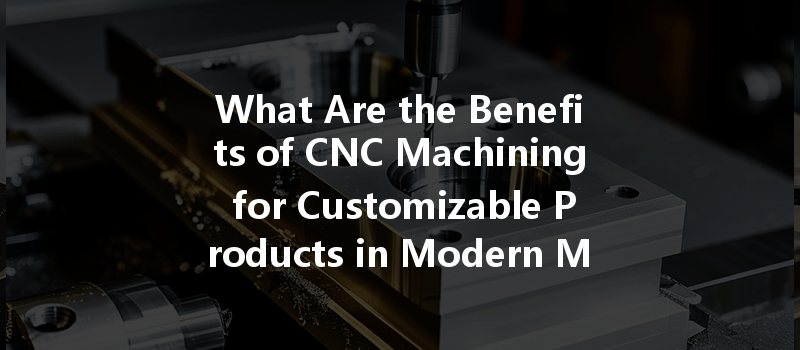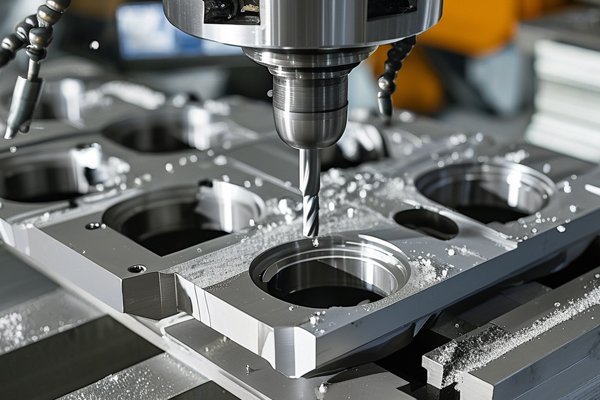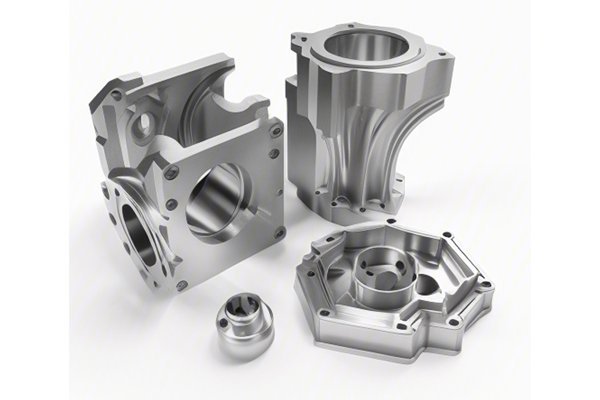Did you know that the CNC (Computer Numerical Control) machining market is expected to reach a value of over $100 billion by 2026? With a compound annual growth rate (CAGR) of approximately 7%, CNC machining is revolutionizing the landscape of manufacturing as we know it. The ability to produce customizable products on a mass scale is not only enhancing efficiency but is also offering unprecedented levels of accuracy and versatility.
But what exactly are the benefits of CNC machining for customizable products in modern manufacturing? In this comprehensive blog post, we will explore the various advantages, applications, technologies, and solutions that make CNC machining an invaluable tool for manufacturers. Whether you’re an engineer, a small business owner, or someone curious about modern manufacturing techniques, this blog will provide insights into why CNC machining is an essential aspect of today’s industrial ecosystem.
—
Understanding CNC Machining
What is CNC Machining?
CNC machining refers to a process that utilizes computer software to control machine tools in the manufacturing of complex parts and components. These machine tools can include lathes, mills, routers, and grinders. This automation allows for high-precision manufacturing and can handle a wide array of materials, from metals and plastics to composites and ceramics.
The Evolution of CNC Machining
CNC machining first emerged in the 1940s and 50s, but it has undergone significant advancements in technology. With the rise of computer technology, modern CNC machines can interface with advanced programming languages and 3D modeling software, granting them extraordinary flexibility and precision. This evolution has paved the way for manufacturers to embrace customizable machining in unprecedented ways.
—
Advantages of CNC Machining for Customizable Products
One of the standout features of CNC machining is its unmatched precision. Traditional machining relies heavily on human operators to guide machines, often leading to inconsistencies. In contrast, CNC machines execute commands with exceptional accuracy, ensuring that each product meets tight tolerances.
Customizable products often require precise dimensions and surface finishes, which can be achieved through CNC machining methodologies. Whether you’re creating components for the aerospace sector or mild steel parts for consumer electronics, CNC’s accuracy ensures that your products meet quality standards consistently.
Modern-day manufacturers often face the challenge of delivering diverse product lines while maintaining efficiency. CNC machining offers remarkable flexibility, allowing for changes and adjustments in designs with minimal downtime.
By simply updating the CNC program, manufacturers can switch between different product designs without the need for extensive retooling. This benefit is particularly crucial in industries overlooking trends and customer preferences, such as fashion, automotive, and consumer goods.
A common misconception surrounding CNC machining is that it is only suited for large-scale production runs. In fact, CNC machining can be both cost-effective for mass production and more economical for low-volume custom orders.
The initial setup costs may be higher compared to traditional machining methods, but the long-term savings stemming from reduced labor costs, materials waste, and faster turnaround times often offset these initial expenses.
With CNC machining, once the design and material specifications are set, the quality of production is nearly uniform throughout. This process drastically reduces the risks of defects, minimizing waste and subsequent rework.
For businesses that thrive on repeatability—think of any manufacturer needing parts to fit specific specifications—CNC machining delivers consistent results every time, allowing for reliable quality assurance.
The speed at which CNC machines can produce prototypes is a game-changer in product development. Traditional prototyping methods can take weeks or even months, while CNC adjustments can drastically reduce that time to just days.
For tech innovators and product designers looking to test new ideas or to iterate on concepts quickly, CNC machining provides a swift pathway from design to prototype to production. This rapid prototyping capability can make the difference between capturing a market opportunity or losing it to a competitor.
CNC machining can handle a wide variety of materials, from soft plastics to tough metals. Additionally, technology allows for the customization of machining based on material properties. This versatility makes it easier to find the right material that aligns with a product’s requirements while keeping costs efficient.
For customizable products, this feature ensures that manufacturers can select materials that not only meet functional aims but also can be aesthetically appealing, thereby enhancing overall product value.
In addition to its manufacturing benefits, CNC machining contributes to workplace safety. Since the machining process is automated and often enclosed, there is a decreased chance of accidents compared to manual machining methods.
Moreover, operators focus primarily on setting up machines, monitoring production processes, and conducting quality control checks—qualities that take the physical risks associated with manual labor out of the equation.
—
Technologies Behind CNC Machining
As we delve deeper into CNC machining, it’s essential to explore the various technologies that contribute to its effectiveness for customizable products.
Computer-Aided Design (CAD) and Computer-Aided Manufacturing (CAM) software allow manufacturers to create, visualize, and adjust designs before sending them to the CNC machine. These sophisticated tools offer context and clarity for the machining process, facilitating seamless transitions from design to production.
The intersection of CNC machining and 3D printing is becoming increasingly relevant. While CNC machines excel at removing material, 3D printers can build objects layer by layer. Combining both techniques can significantly enhance product flexibility, leading to unique designs that traditional manufacturing cannot accommodate.

Multi-axis CNC machines provide the ability to machine components from multiple angles in one setup, increasing precision while minimizing labor and time. For complex geometries associated with customizable products, the ability to machine intricate shapes becomes crucial for precision and efficiency.
—
Applications of CNC Machining in Customizable Products
CNC machining is prevalent across various sectors, with each enjoying distinct advantages in terms of customization:
The aerospace sector demands ultra-high precision and durability. CNC machining allows for the creation of complex components, such as turbine blades, with precise tolerances to meet stringent safety standards.
In the automotive industry, custom parts such as brackets, housings, and connectors need to be produced rapidly and cost-effectively to meet market demands. CNC machining ensures that parts not only fit perfectly but also are made from materials that can withstand the rigors of the automotive environment.
CNC machining is instrumental in producing high-performance medical devices that require precise specifications. Whether creating surgical instruments or implantable devices, CNC machines can produce custom parts that enhance both functionality and patient safety.
With the fast-paced nature of technology, product iterations in electronics happen frequently. CNC machining allows manufacturers to develop prototypes and final products rapidly, ensuring that they can respond to consumer preferences quickly without sacrificing quality.
CNC machines can be used in artistic endeavors, allowing designers to create intricate patterns and forms difficult to achieve with hand tools. Custom sculptures, signage, and furniture pieces can all benefit from CNC technology.
—
Challenges in CNC Machining for Customizable Products
While CNC machining offers numerous benefits, it is essential to recognize potential challenges manufacturers may face:
Operating CNC machines and understanding software integration require skilled personnel. Manufacturers may need to invest in training programs to ensure employees are well-versed in CNC technology.
Although CNC machining can be cost-effective in the long run, the initial investment for high-quality machines and software can be steep. Businesses must conduct careful financial planning to manage these upfront costs.
Some specialized materials, particularly metals with high-performance characteristics, can be expensive. Therefore, thoroughly understanding what materials align with your product requirements and budgets is crucial.
—
Best Practices for Implementing CNC Machining
To optimize the benefits of CNC machining for customizable products, consider the following best practices:
Before jumping into production, utilize advanced CAD/CAM software to refine designs iteratively. Digital simulation can help identify potential challenges, allowing you to test different variables without waste.
Take advantage of rapid prototyping capabilities to test your designs. This practice can save time and resources by ensuring that any design flaws are addressed before mass production.
Investing in skill development and training for your team is essential to maximize the benefits of CNC technology. Ensure your employees are proficient in operating CNC machinery as well as handling related software.
Implement a stringent quality control process that aligns with CNC manufacturing standards. Regularly inspect components for accuracy and compliance with quality specifications to minimize defects and maintain customer satisfaction.
—
CNC machining represents a transformative force in the modern manufacturing landscape, especially when it comes to producing customizable products. The advantages—such as high precision, design flexibility, cost-effectiveness, and rapid prototyping—make it an indispensable tool for countless industries.
However, successful implementation requires a clear understanding of potential challenges involved, particularly regarding skilled personnel, material costs, and initial investments. Ultimately, the benefits far outweigh the challenges, allowing manufacturers to boost productivity, innovation, and customer satisfaction.
As we move forward into an increasingly competitive and technology-driven world, it is crucial to evaluate how CNC machining fits into your manufacturing strategy. The future belongs to those who adapt successfully, and embracing CNC machining might just be the step you need to take to stay ahead in this dynamic industry.
—






